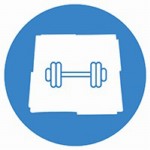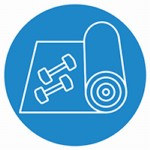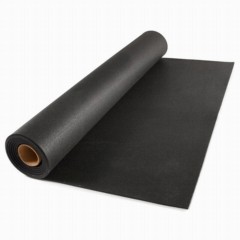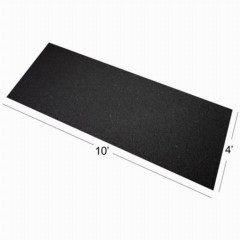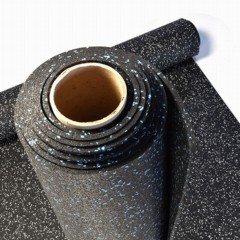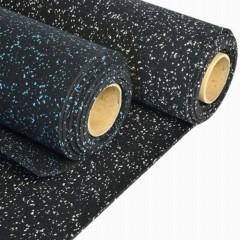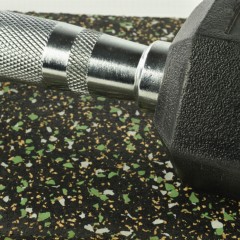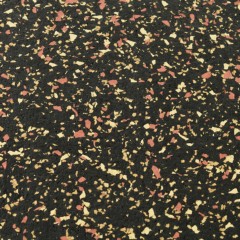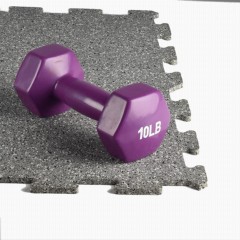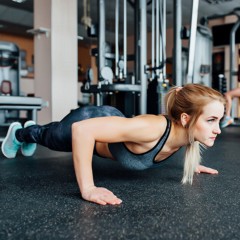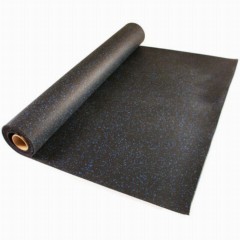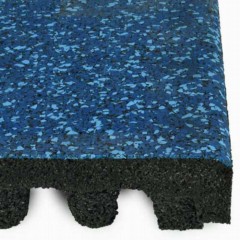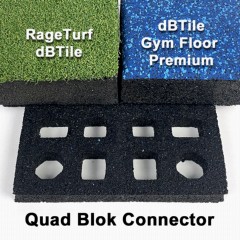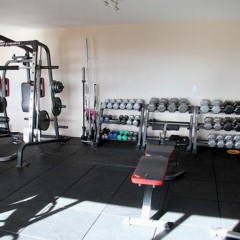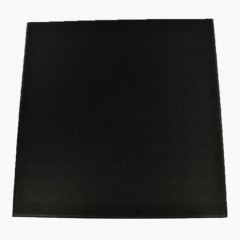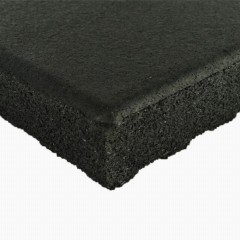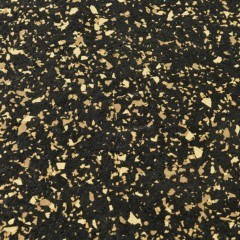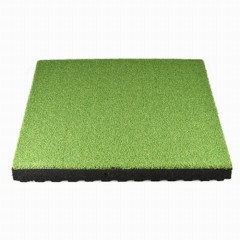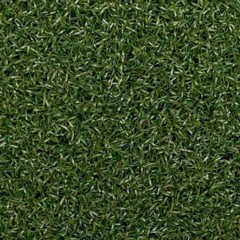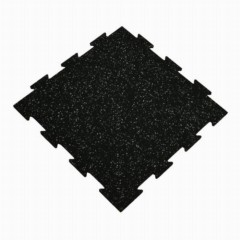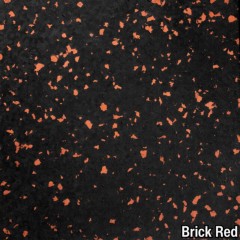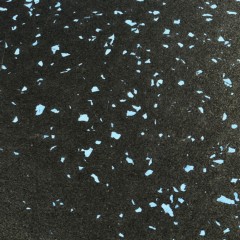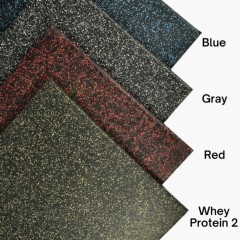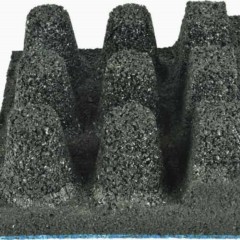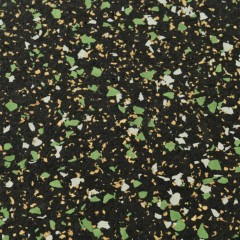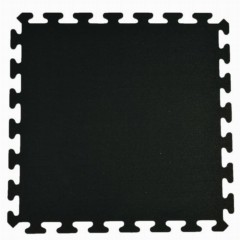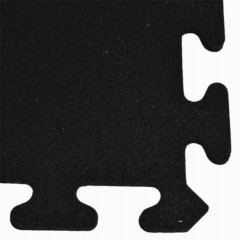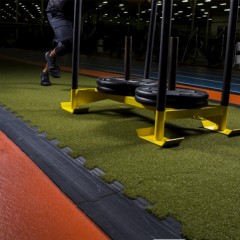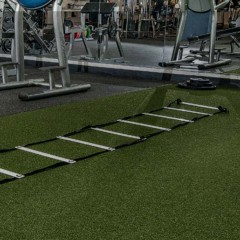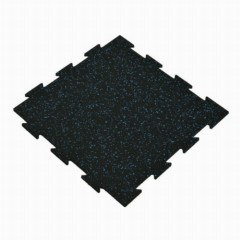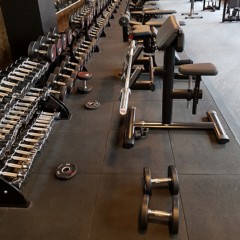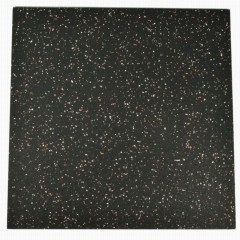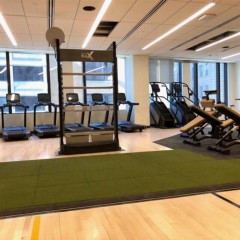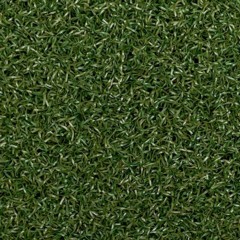Options for Rubber Fitness Mats
If you believe all types of rubber flooring offer the same advantages, think again. Matching the type of workout you have planned to the right rubber fitness mats makes your exercise session more comfortable. Different thicknesses, firmness levels, and formats are available to help you get the level of protection you want for the subflooring.
Types of Rubber Exercise Mats
Finding the right rubber mat for a workout starts with determining the quality and format you want to use.
- Thinner: Thin rubber of less than an inch of thickness works best for bodyweight exercises, underneath a treadmill, and for small free weights.
- Thicker: Use thick rubber of up to 2.5 inches in thickness for weightlifting of heavy free weights.
- Rolls: Rolled rubber is usually thinner, but it allows you to cover a large area quickly and for a lower price than thicker tiles.
Styles for Rubber Fitness Mats
There are plenty of choices in terms of both color and style for use as rubber fitness mats.
- Confetti: The most economical option is confetti rubber, which is manufactured from recycled tires. Scraps from other rolls and whitewalls from tires are also added to the batch. This creates a random and indiscriminate hodgepodge of color throughout the roll.
- Color fleck: Various models are available with specific color fleck concentrations. Choose from a wide variety of colors. Some products offer specific percentages of color flecks.
- Solid black: Many mats, tiles, and rolls of rubber flooring are available in a solid black color.
Features and Benefits of Rubber Exercise Floor Mats
Rubber mats for exercise sessions offer several features and benefits, including:
- Protection for the subfloor
- Excellent durability
- Ease of installation
- Provides a good value
- Creates traction for athletes
- Comfort and anti-fatigue capabilities
- Professional look for the gym
- Insulation against a cold subfloor
- Vibration and noise dampening
- Supports significant amounts of weight
- Can support livestock animals
Where to Use Rubber Workout Matting
You can use rubber matting in a variety of areas, including:
- Home gyms
- Commercial gyms
- Weightlifting areas
- Underneath exercise equipment
- Animal stalls
- Playgrounds
- Basement areas
- Garage workout areas
Rubber Fitness Mats Q&A
What is a rubber mat used for?
You can
use a rubber mat for a variety of activities, including fitness workouts, using exercise equipment, caring for animals, anti-fatigue relief, and under playground equipment.
How large should cardio exercise mats be?
The
best size for cardio exercise mats will depend on the type of workout that you want to do and the number of people involved. A 4x10-foot mat is perfect for one person, while 10x10-foot and 6x60-foot mats are good for workouts where you’ll be moving around a lot or in a room where several people are working out in a class.
How can you use large rubber mats and interlocking gym mats?
The
best usages for large rubber gym mats and interlock gym mats are for areas with weights, plyometric workouts, and underneath exercise machines. You can use these flooring materials in commercial gymnasiums and at your home gym.
How thick should rubber mats for gym equipment be?
Consider the use case planned for the area. A
commercial gym flooring mat that’s needed to hold weight racks for barbells and other heavy machines and equipment may need to be 3/4 or 1/2 of an inch thick. For areas that don’t need to support big items, 1/4 of an inch will probably be adequate.
How firm should rubber exercise flooring be?
The
best level of firmness in exercise flooring depends on the type of workouts occurring. The firmest rubber floors work best for high-intensity plyometric, aerobic, and HIIT workouts. Rubber flooring with less firmness works better to reduce vibration and noise, such as for weightlifting areas.
 $8655 /Tile You Save 20%$21.64/sqftShop$5094 /Tile You Save 20%$6.17/sqftShop$10254 /Tile You Save 19%$25.64/sqftShop$1042 /Tile You Save 19%$2.69/sqftShips Out in 7-10 Working Days SustainableShop$1604 /Tile You Save 20%$4.01/sqftShips Out in 7-10 Working Days SustainableShop$1214 /Tile You Save 19%$3.13/sqftShips Out in 7-10 Working Days SustainableShop$3922 /Tile You Save 20%$9.81/sqftShop$8845 /Tile You Save 19%$22.11/sqftShop$6927 /Tile You Save 19%$8.40/sqftShop$1312 /Tile You Save 20%$3.38/sqftShips Out in 1-3 Working Days SustainableShop$6777 /Tile You Save 19%$9.22/sqftShop$1332 /Tile You Save 19%$3.43/sqftShips Out in 7-10 Working Days SustainableShop$3875 /Tile You Save 17%$9.69/sqftShop$1006 /Tile You Save 20%$2.52/sqftShips Out in 7-10 Working Days SustainableShop$1622 /Tile You Save 20%$4.18/sqftShips Out in 7-10 Working Days SustainableShop$5970 /Tile You Save 20%$14.93/sqftShop
$8655 /Tile You Save 20%$21.64/sqftShop$5094 /Tile You Save 20%$6.17/sqftShop$10254 /Tile You Save 19%$25.64/sqftShop$1042 /Tile You Save 19%$2.69/sqftShips Out in 7-10 Working Days SustainableShop$1604 /Tile You Save 20%$4.01/sqftShips Out in 7-10 Working Days SustainableShop$1214 /Tile You Save 19%$3.13/sqftShips Out in 7-10 Working Days SustainableShop$3922 /Tile You Save 20%$9.81/sqftShop$8845 /Tile You Save 19%$22.11/sqftShop$6927 /Tile You Save 19%$8.40/sqftShop$1312 /Tile You Save 20%$3.38/sqftShips Out in 1-3 Working Days SustainableShop$6777 /Tile You Save 19%$9.22/sqftShop$1332 /Tile You Save 19%$3.43/sqftShips Out in 7-10 Working Days SustainableShop$3875 /Tile You Save 17%$9.69/sqftShop$1006 /Tile You Save 20%$2.52/sqftShips Out in 7-10 Working Days SustainableShop$1622 /Tile You Save 20%$4.18/sqftShips Out in 7-10 Working Days SustainableShop$5970 /Tile You Save 20%$14.93/sqftShop